People
Meet Artist Sung Tieu, Whose Stirring Installations About Kafkaesque Bureaucracy Have Captivated the Art World
The rising German art star was nominated for a national art prize and has a string of institutional shows.
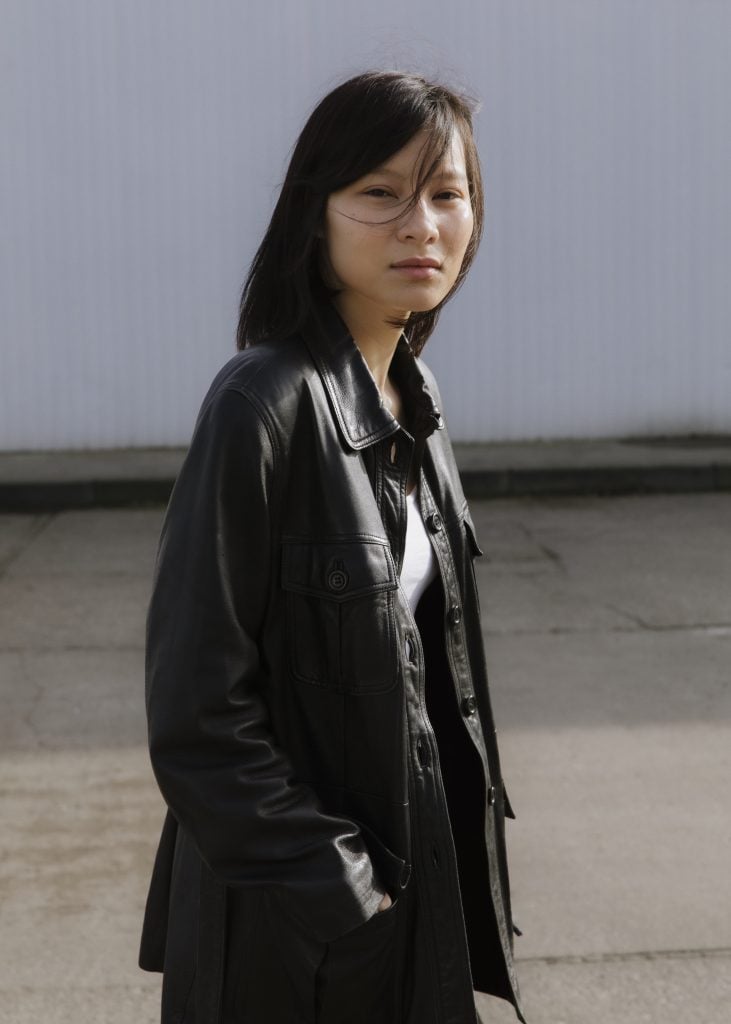
The rising German art star was nominated for a national art prize and has a string of institutional shows.

Kate Brown

At least a few times during her life, artist Sung Tieu has applied with state offices in Berlin to get her name changed—or to put it more aptly, corrected. In Vietnam, where she was born, her first name starts with a non-Latin letter pronounced more or less as “ts,” and it should rightly be written as Ðung.
In Germany, where she has lived for most of her life, she started the paperwork and process, but never ended up going through with it. “They would have allowed me to change my name, but I would have had to choose something like Julia or Brigitte. It had to be gender specific. So I kept Dung,” the artist said.
We sat over mugs of tea in her studio in Berlin, which is filled to the brim with raw materials, pieces from installations, sculptures in boxes, and books. The atumnal light hit a whiteboard charting out her busy months: she’s finalizing a video commissioned as part of the Frieze Artist Award she won last month and is in the midst of a string of institutional shows, opening in Bonn, Munich, Nottingham, and Basel. Looking forward, she’s set to have a solo show at MUDAM in Luxembourg.
Sung’s family immigrated to Berlin when she was young, and she became a German citizen in 2007. Like so many residents who ended up in the city—be it from birth, naturalization, or a visa sticker on their passport, like me—we can all relate on some level to the varying traumas inflicted by German bureaucracy.
A friend visiting the artist from abroad once noted how common it is for German residents to exchange animated stories with details like 5 a.m. lineups outside state offices and the Kafka-esque forms and procedures needed to get appointments with “street-level bureaucrats,” as Tieu called them.
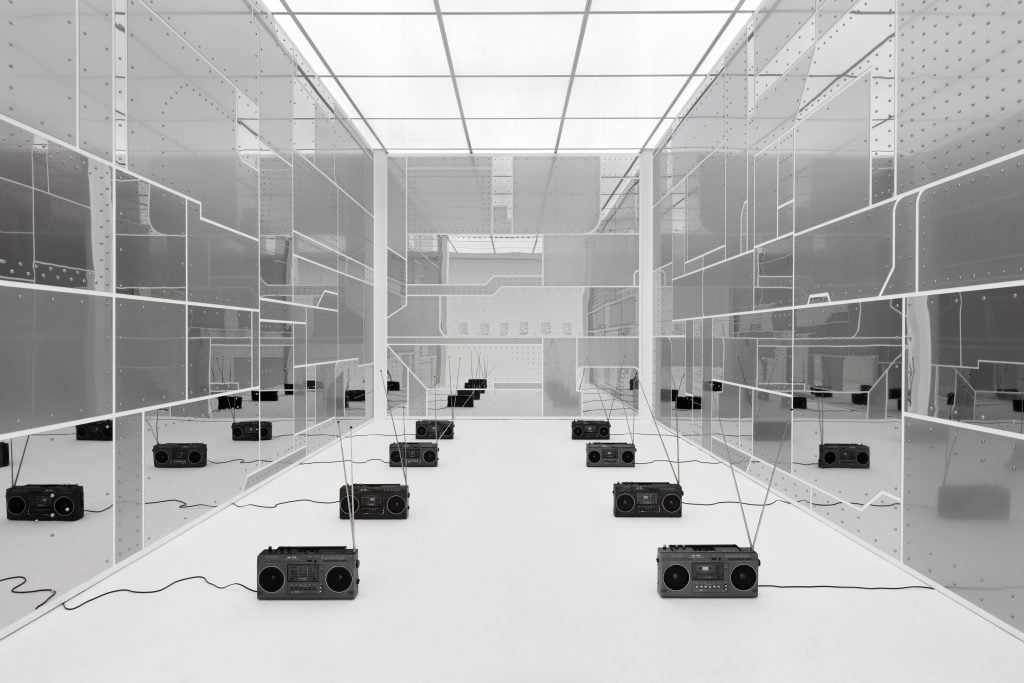
Installation view, Sung Tieu, Song for VEB Stern-Radio Berlin (2021) for the Preis der Nationalgalerie at Hamburger Bahnhof—Museum für Gegenwart, Berlin. © Sung Tieu. Courtesy of the artist, Emalin, London and Galerie Sfeir-Semler, Hamburg/Beirut. Photography: Hans-Georg Gaul.
For Tieu, the interest in these kinds of systems is conceptual, and it runs deep and wide. Bureaucracy, its facelessness and brutalism, as well as social systems of control in general, are ongoing subjects in her art practice. “It is, on the surface, a boring topic, but in that way it is interesting. Das Kleingedruckte—the small print—matters,” she said.
Her works often reference spaces of control, be it border walls, jail cells, waiting rooms, or a boss’s office. Often, they are tense installations pervaded by cold surfaces and readymades—everything is hyper-detailed and obsessively researched. Official documents are often included and, sometimes, reworded so the language gets to their true intent, and how “macabre” these forms really are. “When you are asked about your income, what they really want to check is whether you are worthy,” Tieu said.
Each of her recent projects is rooted in particular historical interests that range from the military-industrial complex, the soft or hard wars waged by state institutions, as well as immigration and prisons. In all of them, the disappearing individual is set against these systems.
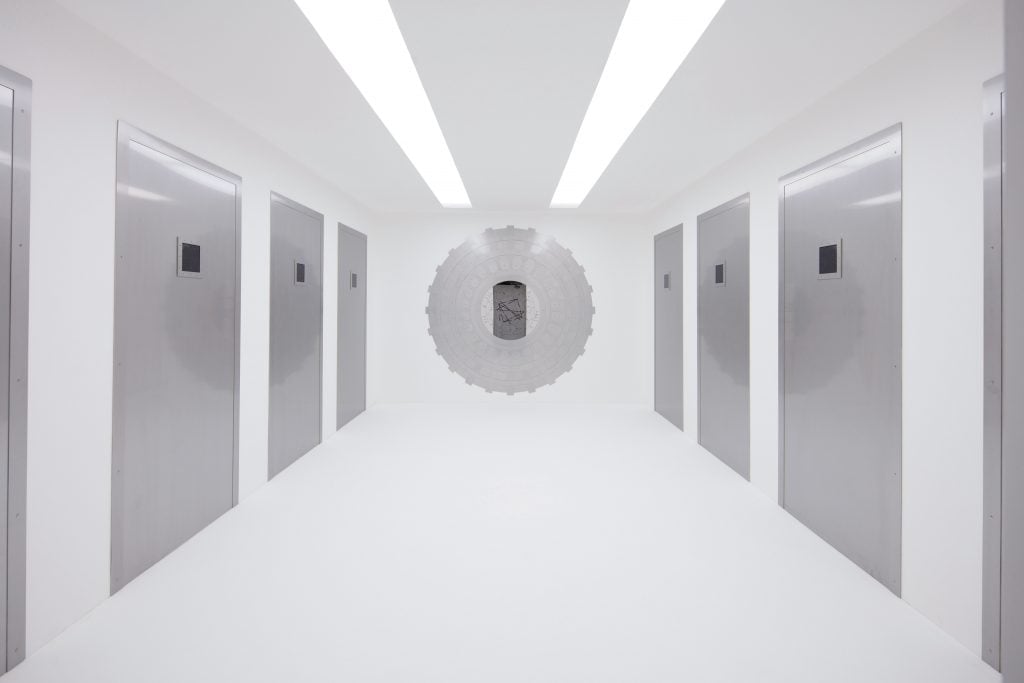
Installation view, Sung Tieu, What is your X? at Emalin, London. © Sung Tieu. Courtesy of the artist and Emalin, London. Photography: Lewis Ronald (Plastiques).
I’ve known Tieu for some years but we met again this fall after I visited her presentation as part of the shortlist for the Preis der Nationalgalerie, Germany’s prestigious prize for artists under 40. (In a testament to the international character of Berlin, Tieu was the only German nominated.)
In her piece Song for VEB Stern-Radio Berlin, she focuses on a lesser known aspect of German history: the arrival of Northern Vietnamese foreign laborers in East Germany (often called the GDR), a migration phenomenon that surged throughout the 1980s. There are transcribed lists charting Vietnamese migrants’ flight paths and work destinations, which Tieu culled from an archive. A room of mirrors cut out to resemble airplane parts frames GDR-era radios placed on the floor, which she painstakingly collected through online classified ads. The radios echo and feedback on one another, emitting a ghostly soundtrack.
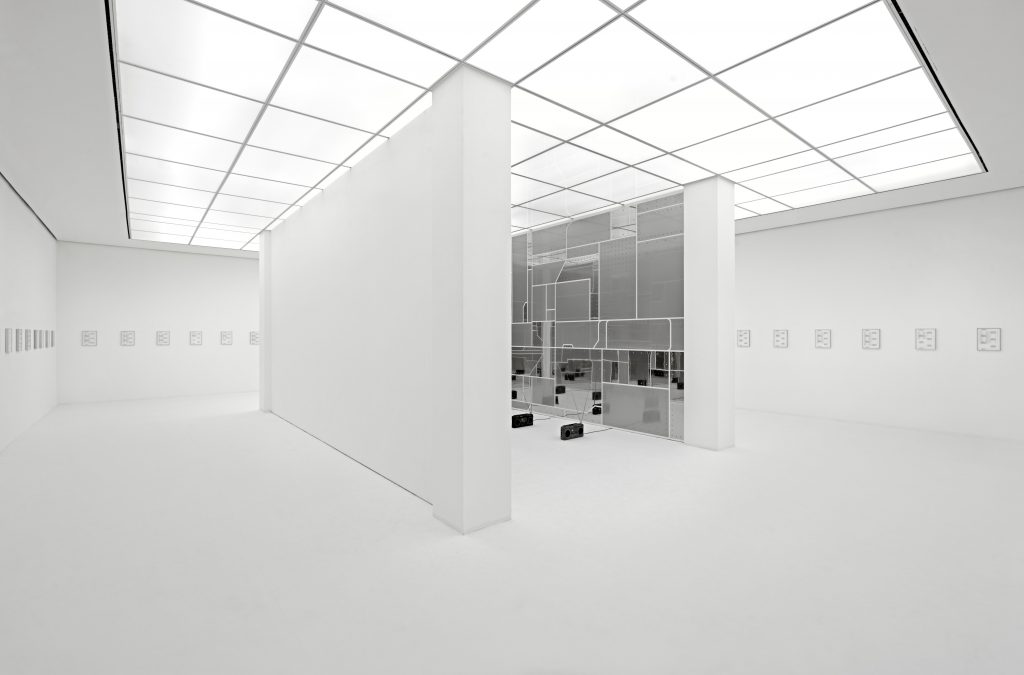
Installation view, Sung Tieu, Song for VEB Stern-Radio Berlin for the Preis der Nationalgalerie at Hamburger Bahnhof—Museum für Gegenwart, Berlin. © Sung Tieu. Courtesy of the artist, Emalin, London and Galerie Sfeir-Semler, Hamburg/Beirut. Photography: Hans-Georg Gaul.
Visitors are required to remove their shoes before entering the installation and stow them on a little metal shelf, which is a bit disarming. That the work overall is missing any thread of overt individual experience is the point.
“Bureaucracy does that with each one of us,” Tieu said. “You zoom out from the personal and you become a number, an address. In this case, I am looking at the GDR in the 1980s, but it says so much about our current times and the way we are surveilled.”
When Tieu became a German citizen, she had to revoke her Vietnamese passport because of Germany’s stringent laws on dual citizenship. She left Northern Vietnam when she was five with her mother to reunite with her father, who had been working as a foreign laborer in the GDR steel industry since she had been born. One could assume Tieu’s father is represented by a number on a flight list that sits in an archive somewhere. “It was not an easy path to follow in Germany, especially in those years,” the artist said.
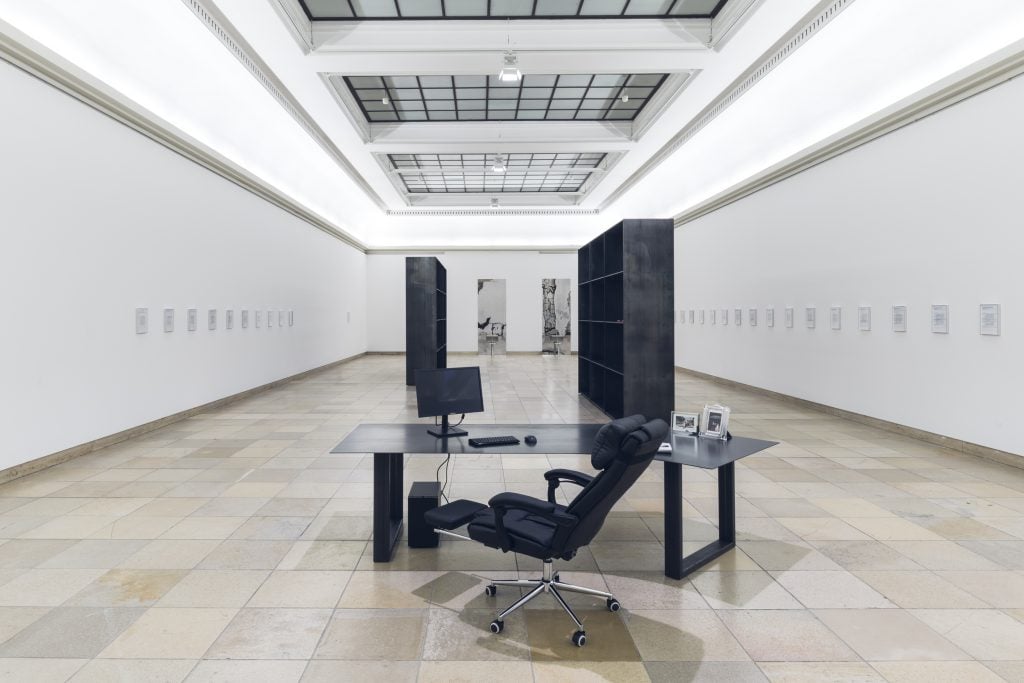
Installation view, Sung Tieu, Zugzwang, at Haus der Kunst, Munich, 2020. © Sung Tieu. Courtesy of the artist, Emalin, London and Sfeir-Semler, Hamburg/Beirut. Photography: Maximilian Geuter.
As such, the work is personal on some level, but Tieu struggles against being viewed solely by her cultural background. “As an artist who is Vietnamese-German, it is not easy to speak from a personal place, because you can get cornered into an identity,” she said. “I am always trying to navigate that.”
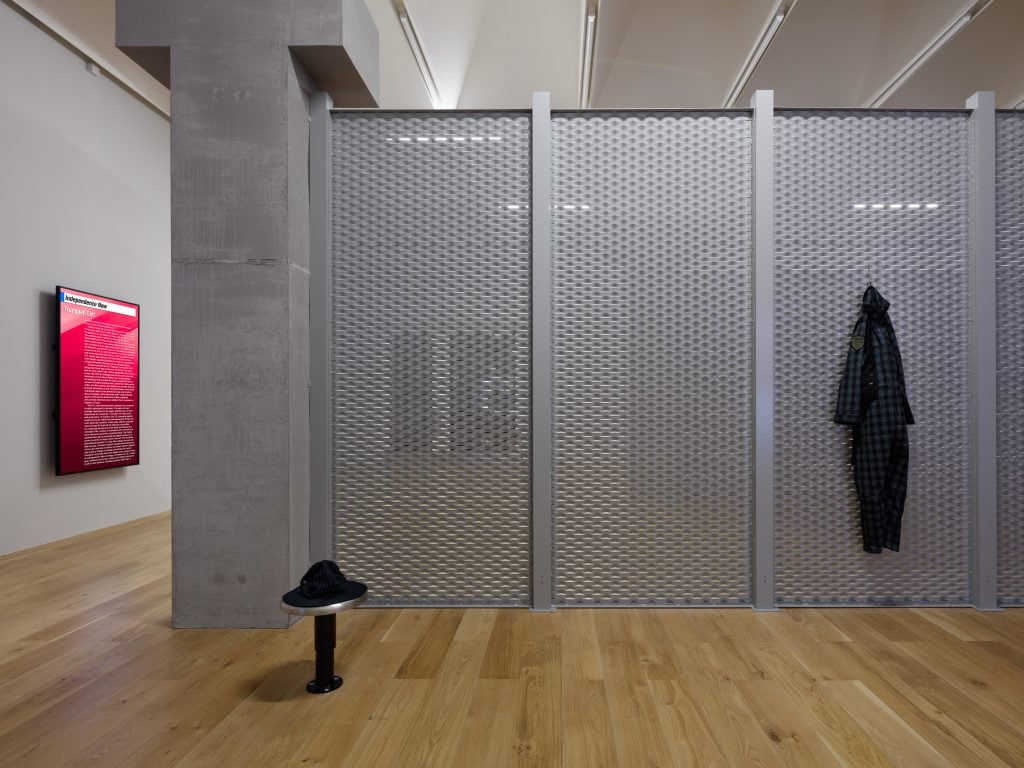
Installation view, Sung Tieu, In Cold Print, Nottingham Contemporary, Nottingham. © Sung Tieu. Courtesy of the artist, Emalin, London and Sfeir-Semler, Hamburg; Beirut Photography: Lewis Ronald (Plastiques).
With parents formed by their experiences in East Germany, but growing up in a newly unified Berlin herself, Tieu has a uniquely hybridized understanding of East-West political tensions. She’s part of a generation of millennial artists in the country who are unearthing critical new perspectives on East German culture.
“Sometimes I wonder if it was a daydream, those memories, as happens when you think about something from when you are young,” she said.
Often in our conversation, she mentioned the stories her mother shared as a tool for reconstructing it herself. At Hamburger Bahnhof and at a recent solo exhibition in Munich at Haus der Kunst, little chocolates in ladybug foil dot the installation; these little German sweets are given as gifts for good luck around holidays but they also adorn her mother’s apartment.
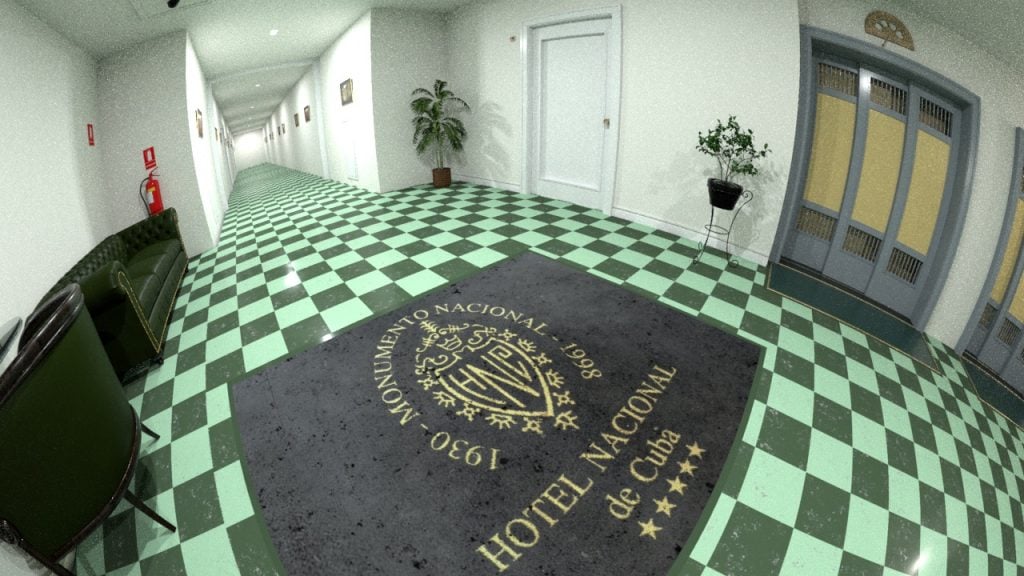
Video still of Sung Tieu’s upcoming film Moving Target Shadow Detection (2021) for the Frieze artist award.
Her work-in-progress for the Frieze Artist Award also pans the East-West axis, looking at the Havana Syndrome, a mysterious ailment that Tieu has become somewhat obsessed with after learning about via news reports. Her upcoming film, called Moving Target Shadow Detection, meticulously recreates the hotel room in Havana where CIA officials believe they were first attacked by sonic weapons. She hopes that by doing so, by documenting and noting the air vents, the doors and other exits, and every corner of the rooms, she might understand what caused the apparent brain trauma. (The true origin of or motive behind the phenomenon remains unproven, but it cropped up again in August when US Vice President Kamala Harris cancelled a trip to Vietnam over a scare about the suspected sonic warfare.)
For a work that was on view until October 10 in a group show at Kunsthalle Basel, Tieu played a soundtrack of her brainwaves that she had recorded when listening to a reconstruction of the Havana Syndrome. In a related work that was on view at the 2020 exhibition “In Cold Print” at Nottingham Contemporary, she presented her brain scans from the event. “I did have to sign off a disclaimer with an awareness of risk… It definitely caused headaches but I don’t think—or, at least, I hope—that I have longterm damage,” she says.
How much she actually desires an answer about the mystery illness is unclear. I suspect her interest it more about the way something unproven and unknown can have a large real-life impact in the political and social sphere—and how fears can be manifested or institutionalized, as walls, borders, or new bureaucratic policies.
“Systems of control only grow. Once we set them in place, it is very rare that they get reduced again,” says Tieu. “To gain back these spaces of freedom is so much harder than just implementing them and enforcing them.”